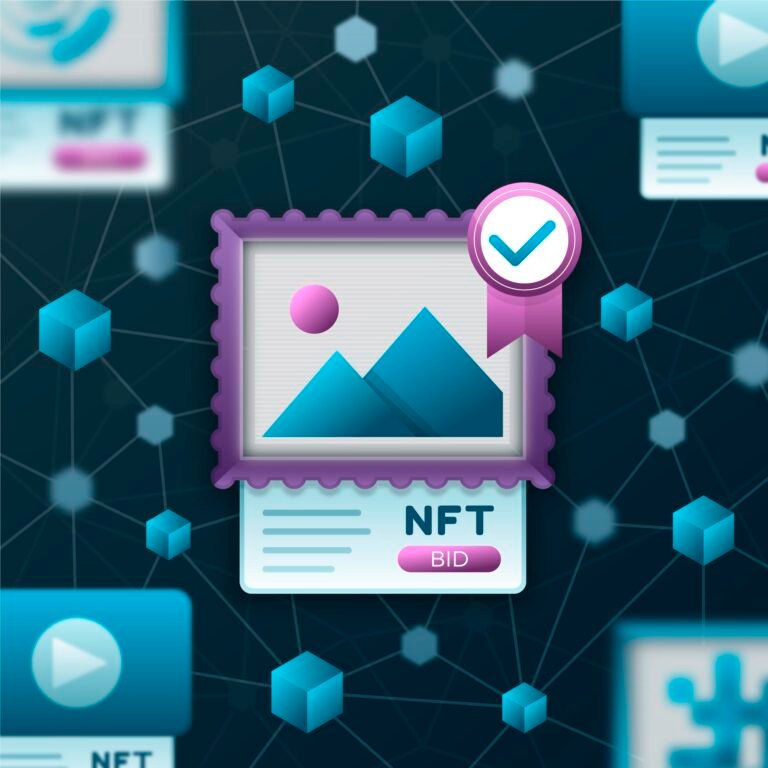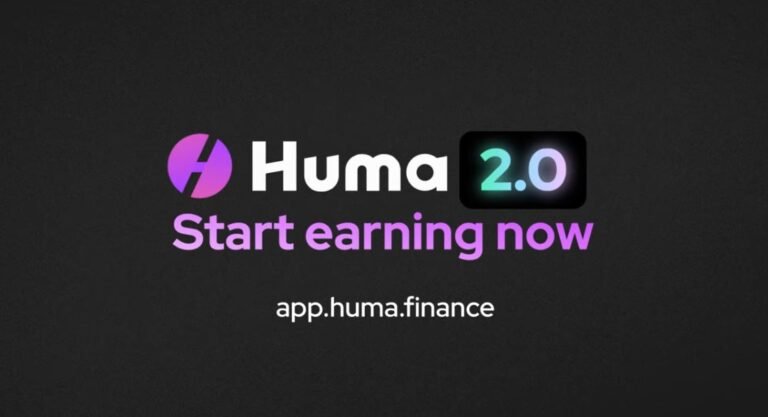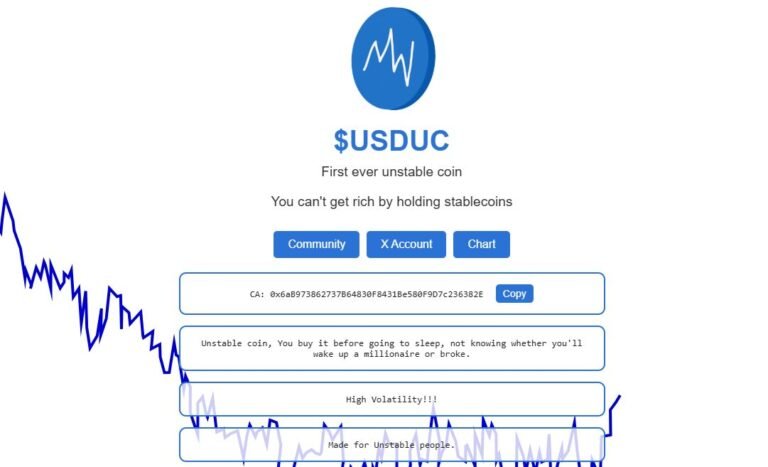Best vs Worst Performing Coins This Year (2025 Review)
1. A Year of Highs and Lows in Crypto
What Made 2025 a Defining Year for Crypto
Coins: The year 2025 has proven to be a rollercoaster for the cryptocurrency market. From regulatory breakthroughs and Layer 2 innovations to the explosive rise of Real World Asset (RWA) tokenization, crypto has once again redefined itself. As institutional adoption grew, and crypto-native protocols matured, several digital assets outperformed expectations — while others plummeted under the weight of poor fundamentals, community distrust, or macroeconomic pressure.
Unlike the meme-driven rallies of previous cycles, 2025 placed a stronger spotlight on utility, sustainability, and ecosystem resilience. The market favored tokens that solved real problems — whether through decentralized infrastructure, AI integration, or smart contract innovations. Meanwhile, projects that relied on outdated hype, flawed tokenomics, or shallow narratives struggled to stay relevant.

Table of Contents
Key Market Trends That Shaped Performance
- The Rise of Real Yield & Sustainable DeFi
Investors gravitated toward DeFi protocols offering real, protocol-earned revenue instead of inflationary emissions. Platforms like GMX, Ethena, and Pendle saw spikes in TVL and token value. - Tokenization of Real World Assets (RWAs)
2025 became the breakout year for RWA tokens. Projects tokenizing U.S. Treasury yields, real estate, and private credit drew institutional attention and brought legitimacy to the space. - AI + Blockchain Integration
Coins powering decentralized AI models or infrastructure — such as Render (RNDR) and Bittensor (TAO) — experienced exponential growth as AI trends collided with crypto utility. - Regulatory Progress and ETF Launches
The approval of additional crypto ETFs in the U.S., U.K., and parts of Asia brought mainstream credibility and billions in inflows to flagship coins like Bitcoin (BTC) and Ethereum (ETH). - Layer 2 and Modular Blockchain Expansion
Layer 2 solutions like Arbitrum and Base showed massive ecosystem growth, while modular architectures (like Celestia and Dymension) opened new possibilities for scalable Web3 applications. - The Death of Low-Utility Meme Coins
Without clear utility or strong community backing, many meme coins lost steam. Only a few — like Dogecoin or Pepe — managed to maintain relevance through updates or integrations.
2. Top Performing Cryptocurrencies of 2025 (So Far)
2025 has rewarded tokens that combined real-world utility with strong fundamentals. These top performers didn’t just rise on hype — they capitalized on powerful narratives like AI, RWAs, DePIN, and Layer 2 scalability. Here’s a closer look at the standout coins of the year so far:
Coin #1: Bittensor (TAO) – The AI Infrastructure Powerhouse
- YTD Performance: +480%
- Narrative: AI x Decentralization
- Why It Soared: Bittensor’s decentralized machine learning network attracted developers and data scientists en masse. As demand for censorship-resistant AI grew, TAO became a foundational asset in the decentralized AI space.
Coin #2: Render (RNDR) – Fueling the AI Visual Economy
- YTD Performance: +310%
- Narrative: Decentralized GPU Power
- Why It Soared: With AI models requiring massive compute resources, Render positioned itself as the “NVIDIA of crypto.” Its ecosystem scaled rapidly as creators, AI labs, and platforms adopted decentralized rendering.
Coin #3: Ethena (ENA) – The Real Yield DeFi Disruptor
- YTD Performance: +250%
- Narrative: Synthetic Dollar and Real Yield
- Why It Soared: Ethena introduced the USDe synthetic dollar and offered sustainable real yields. The protocol attracted massive TVL from both DeFi natives and yield-hungry TradFi players.
Coin #4: Celestia (TIA) – Modular Blockchain Momentum
- YTD Performance: +180%
- Narrative: Modular Architecture for Web3
- Why It Soared: Celestia’s modular data availability layer became a favorite among rollup developers. It enabled more scalable and cost-efficient blockchain networks.
Coin #5: SUI – The Layer 1 Comeback Kid
- YTD Performance: +160%
- Narrative: High-Speed Smart Contracts
- Why It Soared: After a rocky 2024, SUI gained traction with new DeFi protocols and high-speed gaming integrations, leading to renewed interest and ecosystem growth.
Honorable Mentions
- Pendle (PENDLE) – Tokenized yield markets flourished
- Arbitrum (ARB) – Layer 2 scaling success and ecosystem incentives
- Bitcoin (BTC) – New all-time highs after global ETF launches
- Chainlink (LINK) – Real-world asset oracles and CCIP adoption
3. Worst Performing Cryptocurrencies of 2025 (So Far)
While many projects thrived in 2025, several high-profile tokens underperformed or outright collapsed. Whether due to poor fundamentals, vanishing hype, regulatory pressure, or leadership missteps, these coins serve as a cautionary tale for investors chasing momentum without substance.
Coin #1: Shiba Inu (SHIB) – The Meme Coin Fatigue
- YTD Performance: –68%
- What Went Wrong: Despite several ecosystem announcements (Shibarium updates, metaverse hype), investor interest steadily declined. The broader market favored real yield and utility over meme-driven narratives.
Coin #2: SafeMoon (SFM) – A Long-Awaited Collapse
- YTD Performance: –90%
- What Went Wrong: Legal troubles, poor transparency, and failed project deliverables led to a rapid loss of trust. Once considered a meme coin with utility ambitions, SafeMoon saw most of its liquidity evaporate.
Coin #3: ApeCoin (APE) – NFT Hype Has Left the Room
- YTD Performance: –72%
- What Went Wrong: With the NFT market in a downturn and Yuga Labs restructuring, ApeCoin suffered from decreased utility, limited innovation, and poor community momentum.
Coin #4: Internet Computer (ICP) – Tech Doesn’t Always Win
- YTD Performance: –65%
- What Went Wrong: Despite its ambitious goals, ICP struggled to gain real adoption. Developer exodus and waning interest in its complex architecture made it hard for the project to stay competitive.
Coin #5: Hedera (HBAR) – Centralized Partnerships Weren’t Enough
- YTD Performance: –58%
- What Went Wrong: Despite corporate collaborations (Google, IBM), the token failed to see meaningful on-chain usage. Critics pointed to centralization concerns and lack of strong DeFi traction.
Notable Mentions in the Red
- TRON (TRX) – Regulatory scrutiny and limited DeFi adoption
- EOS (EOS) – Long-term stagnation, minimal innovation
- Terra Classic (LUNC) – Continued irrelevance post-collapse
- Floki (FLOKI) – Meme coin volatility without lasting traction
Common Themes Among the Losers
- Reliance on hype instead of product-market fit
- Limited or declining developer activity
- Regulatory red flags and trust issues
- Narrative fatigue in categories like NFTs and meme coins
4. Key Factors Behind the Winners
1. Real Utility and Problem-Solving Use Cases
While some coins soared and others sank, the top-performing cryptocurrencies of 2025 shared several key traits. These common denominators offer valuable insights into what actually drives value in today’s evolving crypto landscape.
Top coins solved real-world problems or introduced breakthrough innovations:
- Bittensor (TAO) enabled decentralized AI training.
- Ethena (ENA) addressed stablecoin sustainability with real yield.
- Render (RNDR) provided affordable, decentralized GPU rendering for AI and 3D creators.
Lesson: Investors favored tokens powering real products over abstract visions.
2. Ecosystem Growth and Developer Activity
High-performing coins experienced major growth in developer adoption and app ecosystem:
- Celestia (TIA) became a preferred modular base layer for rollups.
- SUI and Arbitrum saw surges in DeFi app launches and TVL.
Lesson: Active development communities signal long-term viability.
3. Strong Tokenomics and Revenue Models
Top coins focused on real yield and smart token supply models:
- Pendle tokenized future yield.
- Ethena generated real protocol revenue instead of inflationary incentives.
Lesson: Tokens with sustainable, cash-flow-generating mechanisms outperformed those relying on emissions or hype.
4. Alignment With Dominant Narratives
Winners aligned with the most powerful narratives of 2025:
- AI + Blockchain → TAO, RNDR
- Modular Scaling → TIA
- RWAs and Real Yield → ENA, PENDLE
- Layer 2 Scaling → ARB, BASE
Lesson: Projects that fit the current macro narrative had the wind at their backs.
5. Strategic Partnerships and Institutional Inflows
Coins that onboarded VCs, builders, and institutional capital gained momentum:
- Bitcoin and Ethereum saw massive ETF inflows.
- TAO and ENA attracted institutional integration with emerging AI and DeFi platforms.
Lesson: Institutional validation significantly boosted investor confidence.
5. What Went Wrong with the Losers
The worst-performing coins of 2025 didn’t just suffer from bad luck — they were often victims of outdated narratives, broken tokenomics, and a failure to adapt to a rapidly evolving market. Here are the most common reasons these tokens underperformed:
1. Outdated Narratives and Hype Dependency
Many projects relied on momentum from past cycles — like NFTs or meme coins — without evolving their value proposition.
- ApeCoin (APE) couldn’t pivot beyond the fading NFT hype.
- Shiba Inu (SHIB) lacked innovation and real adoption despite multiple updates.
Lesson: Without evolving narratives and clear utility, hype fades — and so do prices.
2. Poor Tokenomics and Unsustainable Incentives
Tokens with flawed emission schedules, excessive unlocks, or weak utility lost investor trust.
- SafeMoon (SFM) had opaque tokenomics and no sustainable revenue model.
- EOS continued to suffer from overinflated supply and stagnant usage.
Lesson: If tokenomics don’t reward holders or reflect real demand, long-term success is unlikely.
3. Regulatory Pressure and Legal Uncertainty
Some tokens fell victim to enforcement actions or fear of impending crackdowns.
- TRON (TRX) and HBAR faced scrutiny for perceived centralization and compliance issues.
- U.S. investigations into certain legacy tokens led to delistings and lower liquidity.
Lesson: Regulatory risk can kill momentum, even for technically sound projects.
4. Leadership Failures and Broken Roadmaps
Leadership controversies, lack of transparency, or repeatedly missed milestones destroyed community confidence.
- SafeMoon‘s leadership faced legal battles and credibility issues.
- ICP (Internet Computer) suffered from overpromises and underdelivery on its bold vision.
Lesson: Strong leadership and consistent delivery are essential for investor trust.
5. Weak Ecosystem and Developer Abandonment
Without active developer engagement or a growing ecosystem, projects stagnate.
- EOS and LUNC had few meaningful updates or new apps.
- Community interest waned as better platforms emerged.
Lesson: Ecosystem health is a leading indicator of future token success.
6. Performance Metrics Comparison: Top vs Worst Coins
To better visualize the contrast between the best and worst performers of 2025 (so far), here’s a side-by-side performance and fundamentals table:
| Coin | YTD Performance | Category | Narrative | Key Strength / Weakness |
| Bittensor (TAO) | +480% | AI/DePIN | Decentralized AI Training | Real-world AI use case, strong dev activity |
| Render (RNDR) | +310% | AI/Compute Infrastructure | GPU Rendering via Blockchain | Surging demand for AI compute |
| Ethena (ENA) | +250% | DeFi | Synthetic Dollar + Real Yield | Sustainable yield, institutional inflow |
| Celestia (TIA) | +180% | Modular Blockchain Infra | Data Availability Layer | Rollup adoption, modular chain leader |
| SUI | +160% | Layer 1 / Smart Contracts | High-Speed Blockchain | Ecosystem recovery, increased DeFi use |
| Coin | YTD Performance | Category | Narrative | Key Failure Point |
| Shiba Inu (SHIB) | –68% | Meme Coin | Community-Driven Utility | Hype fatigue, weak product adoption |
| SafeMoon (SFM) | –90% | Meme/DeFi Hybrid | Passive Rewards & Hype | Legal troubles, no working ecosystem |
| ApeCoin (APE) | –72% | NFT Ecosystem Token | Bored Ape DAO Governance | NFT market crash, stagnant utility |
| Internet Computer (ICP) | –65% | Layer 1 Blockchain | Scalable Web3 Alternative | Overcomplex tech, weak community traction |
| Hedera (HBAR) | –58% | Enterprise Blockchain | Corporate-Focused DLT | Lack of public adoption, centralization concerns |
7. Sector-Based Analysis: Winners vs. Losers
Not all sectors of the crypto market moved in the same direction in 2025. While some experienced breakout growth, others struggled under the weight of hype fatigue, lack of innovation, or changing investor sentiment. Here’s a breakdown of the year’s top sectors — and how winners and losers emerged within each.
🔹 Layer 1s: Comebacks and Crashes
Winners:
- SUI (+160%) – Recovered from 2024’s stagnation with improved DeFi integration, faster consensus upgrades, and rising developer interest.
- Ethereum (ETH) – Solidified its status as the base layer of decentralized finance and AI-linked infrastructure with increased ETF flows and Layer 2 synergy.
Losers:
- Internet Computer (ICP, –65%) – Technically advanced but too complex, with limited traction among mainstream builders.
- EOS (–58%) – Continued decline with little to no innovation; ecosystem interest nearly flatlined.
Verdict: Layer 1 success hinged on real adoption, app ecosystem growth, and modular or L2 interoperability. Legacy L1s with weak ecosystems lost relevance.
🟢 DeFi: Real Yield vs. Hype Drains
Winners:
- Ethena (ENA, +250%) – Redefined stablecoins and yield with a synthetic dollar backed by delta-neutral strategies and protocol revenue.
- Pendle (PENDLE) – Rose as the go-to protocol for tokenized future yield.
- Uniswap (UNI) – Benefited from fee switch discussions and cross-chain integrations.
Losers:
- SafeMoon (SFM, –90%) – DeFi in name only; plagued by legal issues, centralization, and no functioning ecosystem.
- Old-guard yield farms – Many 2020–2021 style projects saw capital outflows as users migrated to real yield platforms.
Verdict: DeFi users matured. Tokens tied to real revenue and sustainable models soared, while inflationary, gimmick-based DeFi models fell out of favor.
🎮 GameFi & NFTs: Signs of Life or Flatlining?
Winners:
- Immutable (IMX) – Continued to develop partnerships and scalable NFT infrastructure, gaining traction with new game launches.
- RONIN – Slowly rebuilding after its past hack, with new games showing promise.
Losers:
- ApeCoin (APE, –72%) – NFT demand dropped sharply; Yuga Labs’ restructuring left the ApeCoin DAO directionless.
- Low-volume P2E projects – Many GameFi tokens crashed as user counts declined and tokenomics failed to support growth.
Verdict: Infrastructure-level gaming tokens outperformed speculative GameFi coins. NFTs are far from dead — but speculation has given way to slow, builder-driven growth.
🤡 Meme Coins: Who Survived the Hype Cycle?
Survivors:
- Dogecoin (DOGE) – Still culturally relevant, with sporadic rallies tied to Elon Musk and new payment integrations.
- Pepe (PEPE) – Maintained community momentum and managed to integrate with some DeFi platforms.
Failures:
- Shiba Inu (SHIB, –68%) – Lost momentum due to confusing branding, overextended roadmap, and little functional utility.
- Floki (FLOKI) and others – Declined as users shifted focus to more utility-driven tokens.
Verdict: Meme coins with no innovation, no utility, and no sustained community growth faded fast. The era of “buy any meme coin and win” is over.
8. Expert Opinions and Analyst Takes
🔍 Insights from Top Crypto Analysts
Leading crypto analysts agree on one thing: 2025 is no longer a hype-driven market — it’s a fundamentals-first era. According to Delphi Digital, Messari, and Bankless reports:
- Narrative fit is no longer enough unless backed by usage, partnerships, or protocol revenue.
- Tokens like Bittensor (TAO) and Ethena (ENA) succeeded because they solved real problems in booming sectors (AI and DeFi yield).
- Analysts noted a major shift in capital rotation away from Layer 1 maxis and meme tokens toward modular architecture, DePIN, and real-world applications.
“In 2025, investors are looking at metrics like protocol fees, active developers, and GitHub commits — not just Twitter hype.”
— Ryan Selkis, CEO of Messari
🎭 Influencer Bias vs. Data-Driven Picks
The gap between influencer-fueled narratives and true market data has widened:
- Several influencers backed ApeCoin and Shiba Inu, but their price action showed steady decline despite constant exposure.
- In contrast, lesser-hyped coins like Pendle and Celestia quietly outperformed, backed by solid TVL growth and dev activity.
Lesson: Social reach ≠ market success. Real value now comes from verifiable metrics — not viral moments.
📊 Community Sentiment Snapshots
Sentiment data from platforms like LunarCrush and Santiment in mid-2025 show:
- Most positive community buzz: TAO, RNDR, ENA, TIA — all with growing engagement and developer-led roadmaps.
- Most declining sentiment: APE, ICP, SHIB — all had falling social scores and negative community outlook.
✅ Projects with open communication, transparent roadmaps, and continuous delivery earned long-term trust.
❌ Projects relying on hype, vague promises, or past glory lost their communities.
9. What This Means for H2 2025 and Beyond
🚀 Can the Best Performers Keep Climbing?
Yes — if they continue delivering.
- TAO and RNDR are still early in the AI infrastructure race.
- Ethena is expanding integrations with major DeFi protocols, and TIA continues to attract new modular rollups.
- The best coins of H1 2025 have momentum, but competition is rising — and sustaining growth will require real evolution, not just narrative inertia.
Long-term success will depend on ecosystem stickiness, new use cases, and regulatory navigation.
⚠️ Will the Worst Bounce Back or Fade Out?
Most won’t recover unless they:
- Pivot to real use cases
- Onboard new developers
- Improve governance and transparency
Exceptions might include:
- APE, if Yuga Labs regains traction with new metaverse content
- SHIB, if Shibarium delivers real dApps with sticky user bases
But many (e.g., SafeMoon, EOS, ICP) are likely to remain stagnant or disappear altogether.
🧭 Positioning for the Next Bull Run
Smart positioning for late 2025 into 2026 involves:
✅ Doubling Down On:
- AI x Blockchain (TAO, RNDR, FET)
- Real Yield & Tokenized RWA Finance (ENA, PENDLE, ONDO)
- Modular & Scalable Infrastructure (TIA, DYM, ARB)
⚠️ Approaching With Caution:
- Meme Coins without evolving utility
- Projects with poor community transparency
- Tokens with unsustainable emissions models
📚 Investor Takeaway:
The winners of tomorrow will be protocols with traction, tokens with real demand, and teams that ship.
10. Conclusion: Lessons from the Winners and Losers
The first half of 2025 has drawn a sharp line between speculation and substance. The crypto market is maturing — and with that maturity comes a shift in what drives real, lasting value.
🔑 Key Lessons from the Top Performers
✅ Narrative Alignment Isn’t Enough — Execution Is Everything
Coins like TAO, ENA, and TIA not only rode powerful narratives like AI, real yield, and modularity — they delivered working products, scalable systems, and active communities.
✅ Sustainable Tokenomics Win
Projects offering real yield or scarce supply saw increasing demand. Inflation-based rewards or excessive unlocks are no longer tolerated.
✅ Community and Developer Growth Are Leading Indicators
The coins with rising GitHub commits, user activity, and transparent roadmaps outperformed the rest. Quiet builders beat loud marketers.
⚠️ Takeaways from the Worst Performers
❌ Outdated Hype Models Don’t Work Anymore
Meme tokens, old Layer 1s, and NFT-fueled coins with no real value crashed. The market punished hype without delivery.
❌ No Utility = No Future
Tokens like SafeMoon, SHIB, and ICP lacked evolving ecosystems or practical use. They fell behind as users moved to more promising platforms.
❌ Leadership & Communication Matter
Poor governance, delayed roadmaps, or legal controversies sank community trust — and token prices with it.
📈 Final Thoughts: A New Era of Smarter Crypto Investing
2025 has shown that narrative + fundamentals = success. Investors, builders, and communities are all demanding more — and rewarding those who rise to meet that demand.
As we look ahead to H2 2025 and 2026:
- Follow data, not noise
- Track development activity and on-chain traction
- Prioritize protocols that solve real problems
Read Also: 10 Explosive Crypto Trends That Could Define 2025






